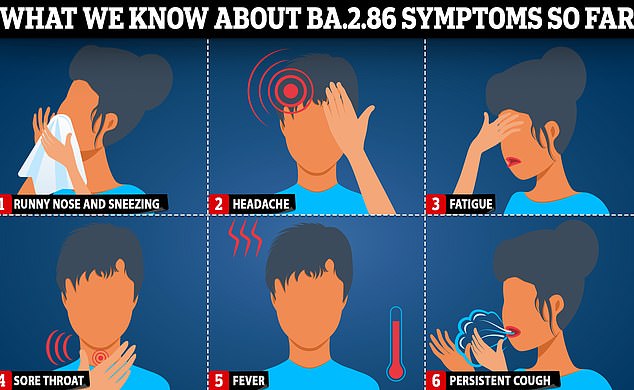Pirola: New ‘highly mutated’ Covid variant has been found in Australia for the first time
The emergence of a ‘highly mutated’ new Covid-19 variant has sparked fears of a resurgence of the virus around the world, including in Australia.
The Pirola variant, which experts say is the ‘real deal’, has just been found in Australia for the first time, with experts fearing it is spreading rapidly undetected.
The first Australian case was found by a laboratory in Western Australia, but there are likely many more as very few Covid infections are sent for testing.
While the World Health Organization (WHO) considers Pirola a ‘variant under monitoring’ rather than a ‘variant of concern’, WA’s health department has warned of its concerns.
“People are encouraged to stay home if they are sick, wash or sanitize their hands frequently, cover coughs and, most importantly, get vaccinated against Covid-19 and influenza,” the statement said.
The Pirola variant of Covid, which experts say is the ‘real deal’, has been found for the first time in Australia. The photo shows a woman wearing a face mask
‘Staying up to date on vaccinations remains the best way to prevent serious illness and hospitalizations from Covid.’
Pirola, scientifically named BA.2.86, is a mutated cousin of Omicron and was first discovered in Israel and Denmark in August.
It has since spread to the UK, US, South Africa, Portugal, Sweden, France, Canada, Thailand, Switzerland and now Australia.
According to the WHO, it is one of more than 600 Omicron subvariants currently in circulation.
As with all viruses, Covid is constantly changing through mutations and sometimes these mutations result in new variants.
Like other new Covid variants, online virus trackers decided to call BA.2.86 something easier to remember and came with Pirola.
If the WHO declares it a ‘variant of interest’, it could be shortened to ‘Pi’, the letter following Omicron in the Greek alphabet – the system officials use to name new species.
Pirola is of much more concern than other variants because it has 35 mutations in its spike protein, the part of the virus that Covid vaccines target.
Several mutations of Pirola have unknown functions, but others are thought to help the virus evade the immune system.
The genetic jump “is roughly the same magnitude” as between the original Omicron variant and the previous Delta variant that was replaced by the former, the US Centers for Disease Control and Prevention said.
In Britain, the Department of Health and Social Care announces that vaccinations for care home residents and vulnerable adults will start earlier than planned because of Pirola.
Although virologists have cautioned that it is too early to reliably pinpoint the specific symptoms of BA.2.86, its precursor BA.2 showed some telltale signs.

The first Australian case of Pirola was found by a Western Australian laboratory, but there are likely to be many more as very few Covid infections are sent for testing. A woman is pictured receiving a Covid vaccination
Experts aren’t sure yet, but if it behaves like similar Omicron subvariants, signs to look out for include a runny nose, sore throat and fatigue.
Epidemiologist Catherine Bennett from Deakin University said it was important to ‘watch and wait’ to see what happens to Pirola in the coming weeks and months.
“It’s not just about what this variant does and how it could affect us… it’s also about the bigger picture,” Professor Bennett told the ABC.
“What could this mean for our future if (Pirola) builds a new viral genome platform on which more mutations can accumulate? Where does that take the virus and what does that mean for us?’

The signs (pictured) to look out for when using Pirola include a runny nose, sore throat and fatigue
